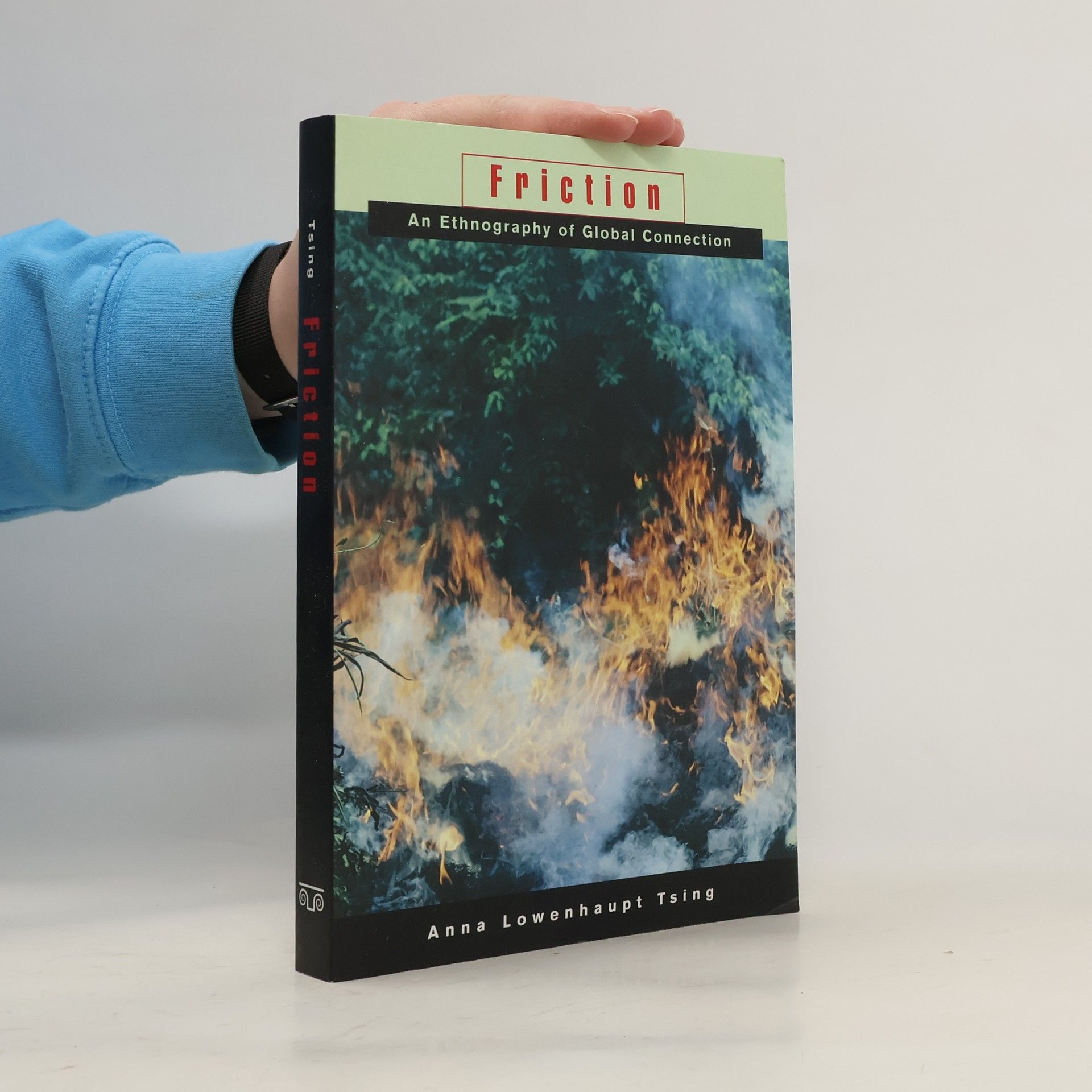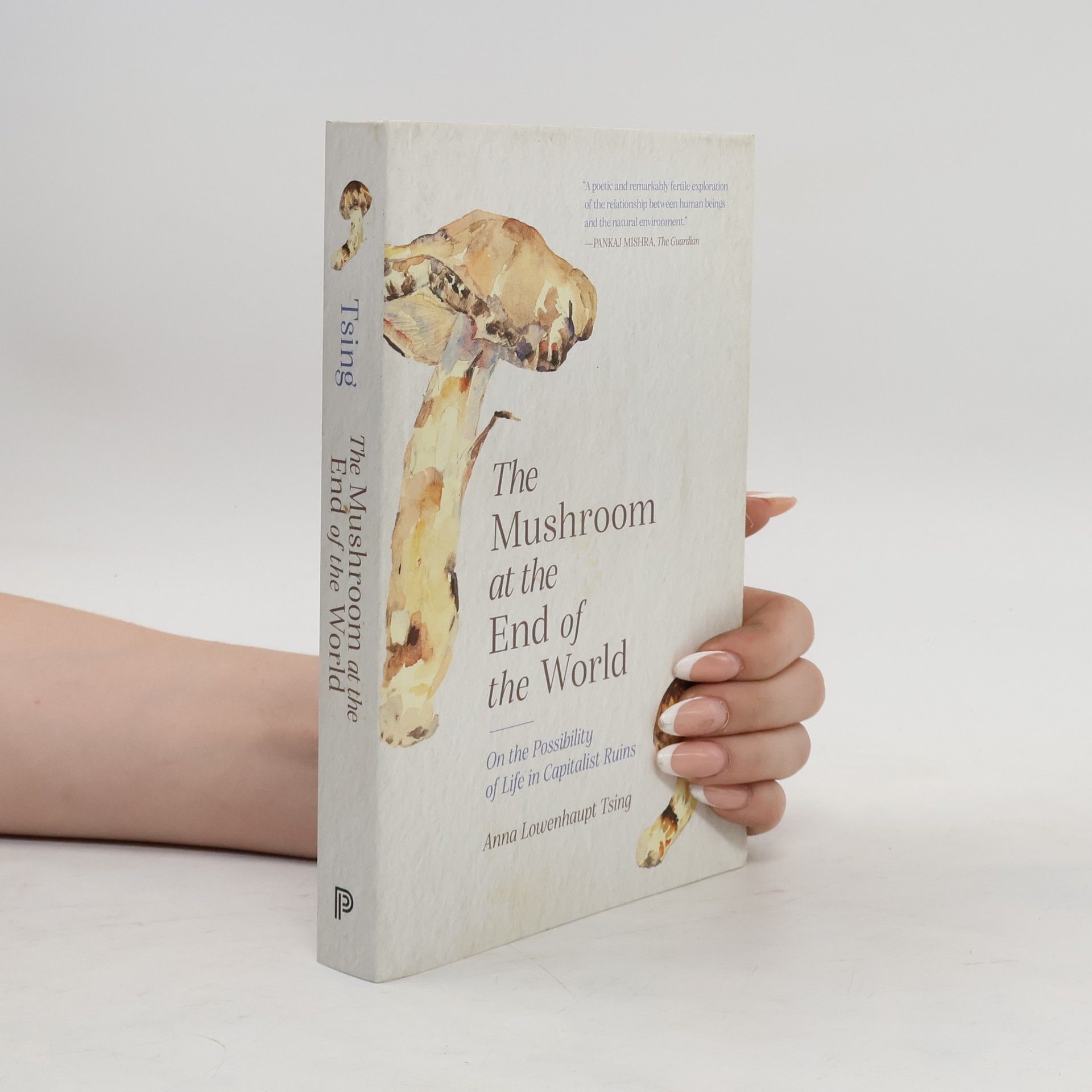Exploring the conflict surrounding the Indonesian rainforests, this book delves into the broader social tensions that influence global dynamics. It examines the interplay between environmental issues and societal challenges, highlighting how local struggles reflect larger themes of power, justice, and sustainability. Through vivid case studies, the narrative reveals the complexities of conservation efforts and the impact of human activity on both nature and communities, offering insights into the interconnectedness of ecological and social systems.
Anna Tsing Book order
Anna Lowenhaupt Tsing is an anthropologist whose work delves into the intricate relationships between humans and their environments. Her research often focuses on how marginalized communities navigate complex ecological and social landscapes, revealing unique perspectives on global interconnectivity. Tsing's writing style is characterized by its nuanced exploration of the interplay between nature, culture, and power dynamics, offering profound insights into the contemporary world.






- 2024
- 2024
Im Meratusgebirge auf Borneo verändert sich der Regenwald seit 1970 durch Holzernte und Ressourcenabbau. Korrupte Behörden und Investoren verdrängen einheimische Waldbewohner. Gleichzeitig bilden sich Allianzen zum Schutz des Waldes. Anna Lowenhaupt Tsing dokumentiert diese komplexen sozialen Interaktionen und deren kulturelle Auswirkungen.
- 2024
"A Field Guide to the Patchy Anthropocene leads the reader through a series of sites, observations, thought experiments, and genre-stretching descriptive practices to take stock of our current planetary crisis. This is a guide for researchers of many stripes; a book that nurtures and promotes a revitalized natural history in direct response to worlds falling apart"--
- 2018
Der Pilz am Ende der Welt
Über das Leben in den Ruinen des Kapitalismus
Das erste neue Leben, das sich nach der nuklearen Katastrophe in Hiroshima wieder regte, war ein Pilz. Ein Matsutake, der auf den verseuchten Trümmern der Stadt wuchs – einer der wertvollsten Speisepilze Asiens, der nicht nur in Japan, wo er Spitzenpreise aufruft, vorkommt, sondern auf der gesamten Nordhalbkugel verbreitet ist. Dieser stark riechende Pilz wächst bevorzugt auf von der Industrialisierung verwüsten und ruinierten Böden und ist nicht kultivierbar. In ihrem faszinierenden kaleidoskopischen Essay geht die Anthropologin Anna Lowenhaupt-Tsing den Spuren dieses Pilzes sowie seiner biologischen und kulturellen Verbreitung nach und begibt sich damit auch auf die Suche nach den Möglichkeiten von Leben in einer vom Menschen zerstörten Umwelt. Sie erzählt Geschichten von Pilzsammlern, Wissenschaftlern und Matsutake-Händlern und öffnet einen neuen und ungewohnten Blick auf unsere kapitalistische Gegenwart. Denn eigentlicher Gegenstand ihrer preisgekrönten und in viele Sprachen übersetzten Erzählung ist die Ökologie des Matsutake, das Beziehungsgeflecht um den Pilz herum, als pars pro toto des Lebens auf den Ruinen des Kapitalismus, das ein Leben in Beziehungen sein – oder aber nicht sein wird.
- 2017
The Mushroom at the End of the World
- 352 pages
- 13 hours of reading
"A tale of diversity within our damaged landscapes, The Mushroom at the End of the World follows one of the strangest commodity chains of our times to explore the unexpected corners of capitalism. Here, we witness the varied and peculiar worlds of matsutake commerce: the worlds of Japanese gourmets, capitalist traders, Hmong jungle fighters, industrial forests, Yi Chinese goat herders, Finnish nature guides, and more. These companions also lead us into fungal ecologies and forest histories to better understand the promise of cohabitation in a time of massive human destruction."--Publisher's description.
- 2005
A Day Out
- 16 pages
- 1 hour of reading
Bill went for a walk. He went over a river, up a hill and into a wood and behind a waterfall. A few steps behing Bill, however, is a hungry bear with an eye on Bill's sandwiches. The bear's attempts to grab the sandwiches are foiled be a variety of minor disasters.
- 2005
The Oak Tree
- 16 pages
- 1 hour of reading
A non-fiction, photographic picture book about the different parts of an oak tree and the creatures that live in its roots, trunk, bark, branches and leaves. The photographs and life-like illustrations answer the repeated question: 'Who lives...?'
- 2005
What Do You Like?
- 16 pages
- 1 hour of reading
What do you like to eat? This non-fiction recount features several children answering the question over the course of a day. It features different types of food using photographs, labels, speech bubbles and a clock face showing when different meals are typically eaten.
- 2004
Friction
- 376 pages
- 14 hours of reading
Challenging the view that globalization signifies a 'clash' of cultures, this book here develops friction in its place as a metaphor for the conflicting social interactions that make up our contemporary world. It shows how creative cultural differences are in the grip of worldly encounter, and how it is overlooked in theories of the global.
- 1993
An ethnography that focuses on Meratus Dayaks, a marginal and marginalized group in the deep rainforest of South Kalimantan, Indonesia. It looks not for consensus and coherence in Meratus culture but rather allows individual Meratus men and women to return our gaze.
